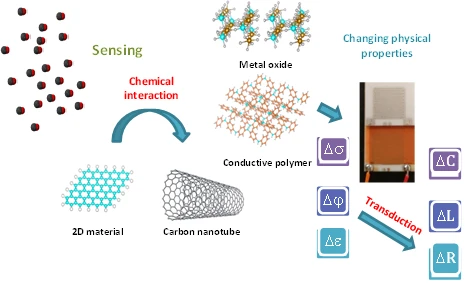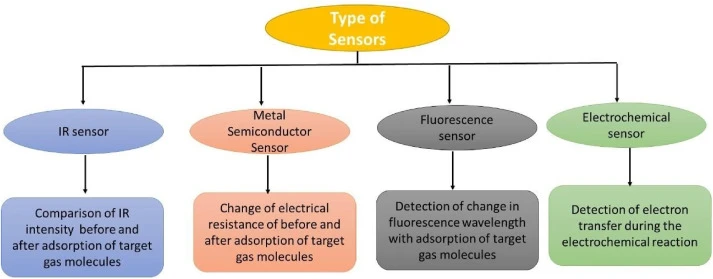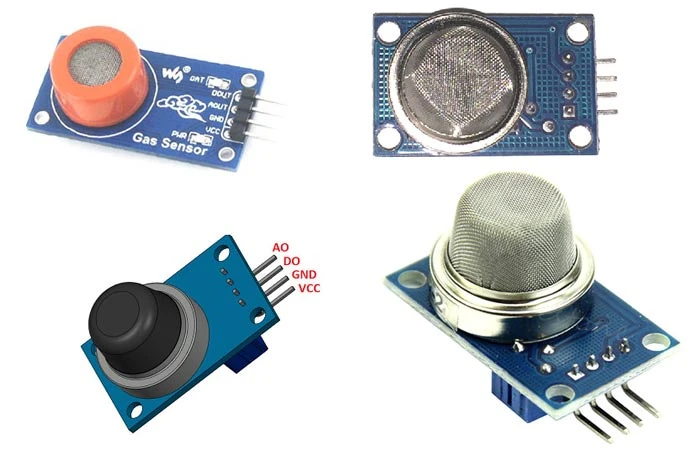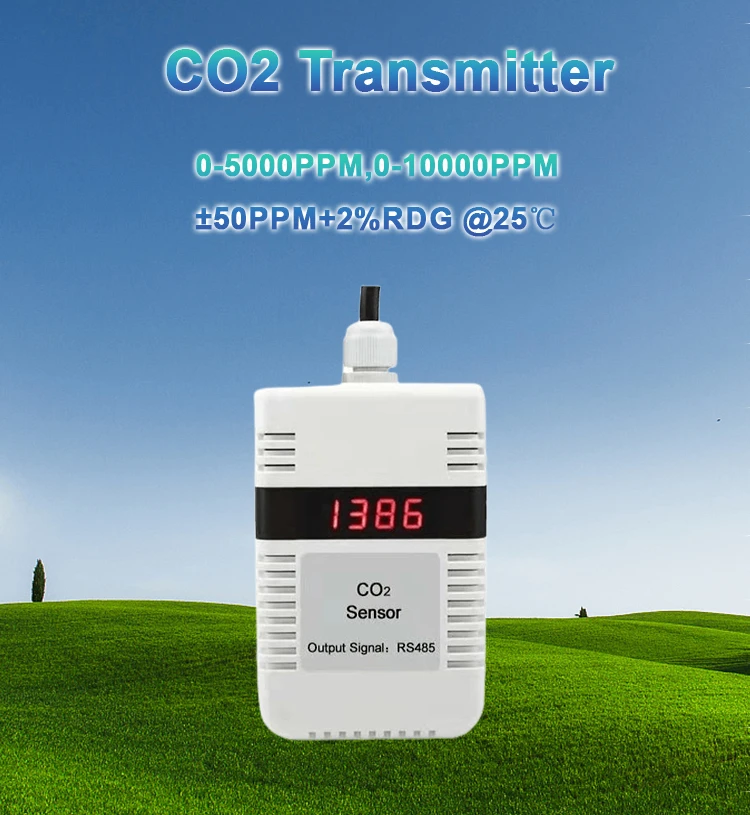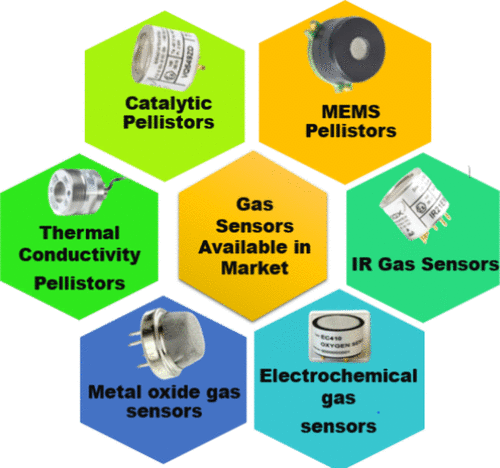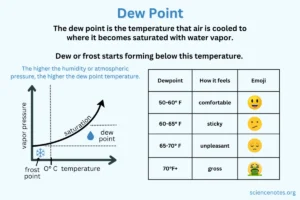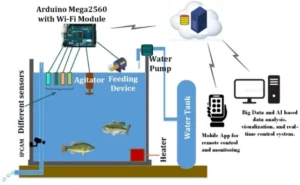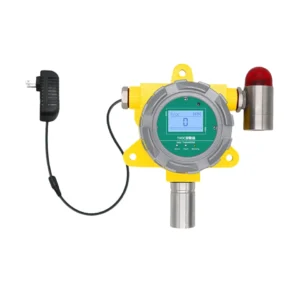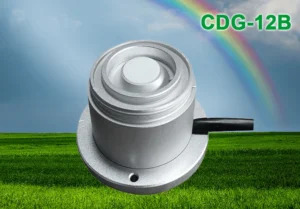Gas Sensors: Varieties, Operating Mechanisms, and Uses
What defines a gas sensor?
Gas sensors utilize physical or chemical reactions to transform the concentration of gases into electrical signals, providing outputs after processing. Many industries widely employ them to detect toxic gases, harmful substances, and natural gas leak sensor.
A gas sensor checks for gas presence or levels in a fixed area. Industries like coal mining, petroleum, chemical processing, municipal services, healthcare, transportation, and homes often use it. These sensors measure combustible, flammable, and toxic gases, as well as oxygen consumption.
Types of Gas Sensors
To select the most appropriate gas sensor, understanding the diverse sensor characteristics is essential. Consider factors like the ability to measure toxic gases, portability, and measurement accuracy. Knowing the details of each sensor type allows someone to make an informed decision.
Based on gas types:
– Combustible gas sensors (using catalytic combustion, infrared, thermal conductivity, or semiconductor technology)
– Toxic gas sensors (employing electrochemical principles, metal-semiconductor technology, photoionization, or flame ionization)
– Harmful gas sensors (often leveraging infrared or ultraviolet methods)
– Oxygen sensors (typically using paramagnetic or zirconia-based technologies)
Based on usage methods:
– Portable gas detectors
– Fixed gas detectors
Based on sampling methods:
– Diffusion sensors (installed directly in the environment with natural diffusion)
– Pumping sensors draw gas into the detection unit using suction pumps. The classification divides inhalation into complete inhalation and diluted inhalation based on the amount of dilution needed.
Based on functions:
– Single gas sensors (detecting only one type of gas)
– Composite gas sensors (capable of detecting multiple gases simultaneously)
Based on detection principles:
– Semiconductor gas sensor
– Electrochemical gas sensor
– NDIR gas sensor
– Catalytic gas sensor
– Thermal conductivity gas sensor
– Magnetic gas sensor
Classification by working principles is the most common approach. The subsequent sections will detail seven types of gas sensors, including their principles and applications:
1. Semiconductor Gas Sensors
A semiconductor gas leak sensor uses a semiconductor element to measure gas levels. Its principle involves a redox reaction on the semiconductor surface that alters resistance values. As gas interacts with the measuring cell, it adsorbs and reacts on the surface. Changes in conductivity or potential caused by carrier movement detect gas levels.
When methane goes through the measuring cell, it uses oxygen in a reaction. This reaction changes the electron status on the semiconductor surface and alters conductivity. Increasing or decreasing resistance correlates with methane presence and concentration, allowing for its measurement.
Advantages: They are simple in design, cost-effective, highly sensitive to detection, and have quick response times.
Disadvantages: They limit the linear measurement range and often experience effects from other atmospheric gases and environmental temperature variations.
These gas leak sensor are common for finding gas leaks in homes and industries. They work well for gases like methane, propane, and hydrogen.
2.Electrochemical Gas Sensors
Electrochemical gas leak sensor work by reacting with a target gas. This reaction creates an electrical signal that relates to the gas’s concentration. These sensors typically function as current sensors, and the current they generate relates linearly to the gas concentration.
The principle of operation involves the gas passing through a diaphragm designed to prevent condensation and block dust. Gas molecules then diffuse through a filter to reach the working electrode, where they undergo oxidation or reduction. This reaction alters the current flowing through an external circuit.
Among electrochemical designs, the simplest involves a two-electrode system. This system keeps the working electrode and the counter electrode apart using an electrolyte. It connects them to an external circuit that has low resistance. As gas enters the sensor, it reacts internally, producing an electric current. An increase in gas concentration yields a corresponding increase in current.
Advantages of electrochemical gas sensors include a rapid response time and a reliable linear output. However, these sensors must operate in an oxygen-rich environment (1-10% VOL) and consume liquid electrolytes during use. Factors such as temperature, humidity, pressure, and similar chemical gases can affect their accuracy. In environments with mixed gases, potential errors may occur.
3.NDIR Gas Sensors
NDIR (non-dispersive infrared) gas sensors function by emitting infrared light to excite gas molecules. These sensors exploit the principle that different gases absorb specific infrared wavelengths. With higher gas concentrations, less infrared light penetrates. As infrared rays traverse the measurement area, they resonate with gas molecules, reducing their intensity as molecules vibrate.
Different gases have unique vibration frequencies due to molecular weight differences, which also determine their infrared absorption wavelengths. For instance, methane molecules vibrate at 333 kHz with a central wavelength of 3.3 um.
NDIR sensors have many benefits. They can measure gases like CO2. Other sensors, like catalytic combustion, electrochemical, and semiconductor sensors, may not do this. Unlike some sensors, NDIR does not require oxygen as it relies on optical measurement principles. They can measure up to 100% volume/volume concentration with great stability. This stability mainly depends on the quality of the light source. It may allow for two years without needing calibration. Additionally, NDIR sensors have low maintenance costs.
NDIR sensors have some downsides. They use a lot of power and can be expensive for ppm-level measurements. This is due to their complex design and the need for advanced software and hardware.
4. Catalytic Gas Sensors
Catalytic gas leak sensor serve as gas detectors using a platinum resistance temperature sensor. A high-temperature resistant catalyst layer coats the surface of this platinum element, facilitating the catalytic combustion of combustible gases at specific temperatures. This process increases the platinum’s temperature, altering its resistance value.
People call these sensors catalytic bead gas sensors. They usually have a platinum resistance wrapped in ceramic beads. While theoretically capable of detecting all combustible gases, practical applications reveal various exceptions. People commonly use them to detect gases like methane, LPG, and acetone in the air.
Advantages include strong resistance to harsh environments and toxic gases. They have a long service life. Plus, they have low maintenance costs. However, they must operate in the absence of light and pose risks of explosion or fire. Components can break down when exposed to sulfide and halogen compounds. This reduces their lifespan. They also become less accurate in low-oxygen environments. These sensors mainly check for flammable gases at places like gas stations and factories. They can detect CO, H2, C2H2, and more.
5. Magnetic Gas Sensors
Magnetic gas sensors react to changes in heat, light, radiation, and pressure. They do this by changing their magnetic properties. This allows for the creation of very sensitive and reliable sensors. Commonly involving magnetic probes with strong measurement capabilities, these sensors often utilize oxygen’s magnetic properties for concentration measurements. The high magnetism of oxygen allows strong magnetic fields to attract it. Thermal magnetic convection and magneto-mechanical sensors are common types.
These sensors are very helpful for accurate oxygen detection. Industries like chemical fertilizer production, cryogenic air separation, thermal power stations, and natural gas conversion use them. They also monitor emissions like exhaust and flue gases.
6. Photoionization Gas Sensors
Photoionization gas sensors (PID) detect gases by utilizing photoionization. They use ultraviolet light from an ion lamp to treat gases. This makes the gases ionize after they absorb enough UV light energy. Measuring the minute current produced during ionization determines gas concentrations. PIDs can detect volatile organic compounds (VOCs) and other toxic gases ranging from 10 ppb to 10,000 ppm. Given that many hazardous substances contain VOCs, these sensors are extremely sensitive to detecting these compounds.
7.PID Gas Sensor
Advantages: The PID sensor offers high sensitivity, free from poisoning issues, ensuring safety and reliability. It is capable of detecting over 400 types of volatile organic compounds.
Disadvantages: It cannot measure air, toxic gases, or natural gas effectively.
The PID sensor is the most sensitive device for finding organic gases. It is especially good at detecting gas leaks in very low amounts compared to other detectors.
8.Thermal Conductivity Gas Sensors
A thermal conductivity gas sensor detects specific gases in the air. It changes gas concentration data into electrical signals. This helps with detection, monitoring, analysis, and alerts. It employs gas-sensitive materials with thermal conductivity to detect concentration variations by comparing the thermal conductivity differences between gases and air. This change usually shows up as resistance changes in the circuit. These changes help determine the gas type and level.
Advantages: These sensors offer a wide detection range, with detection concentrations reaching up to 100%. People recognize them for their excellent stability and long service life without issues of catalyst aging.
Drawbacks: They experience inadequate detection precision, low sensitivity, and temperature fluctuations.
Industries like chemicals, coal, military, and the environment widely use these gas sensors. They help improve sensor performance.
Gas Chromatograph Analyzer
Utilizing chromatographic separation and detection technology, this analyzer separates and measures various gas samples, making it a comprehensive analytical tool. It has applications in power plant boiler tests.
During operation, someone periodically collects a gas sample from a sampling device. A pure carrier gas (mobile phase) carries the sample through a chromatographic column at a set flow rate. The process packs the column with a solid or liquid stationary phase. The system spreads components across two phases. It lets them exit the column over time. The detector measures them.
Benefits: Exceptional sensitivity ideal for micro and trace analysis, capable of examining complex multiphase separation gases.
Disadvantages: Regular sampling does not allow for continuous sampling and analysis. The system is complex and mostly suited for laboratory settings, not ideal for industrial field gas monitoring.
